Related Research Articles
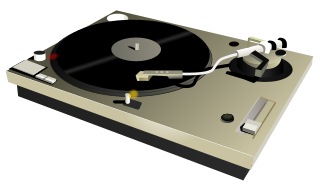
A phonograph, later called a gramophone, and since the 1940s a record player, or more recently a turntable, is a device for the mechanical and analogue reproduction of recorded sound. The sound vibration waveforms are recorded as corresponding physical deviations of a spiral groove engraved, etched, incised, or impressed into the surface of a rotating cylinder or disc, called a "record". To recreate the sound, the surface is similarly rotated while a playback stylus traces the groove and is therefore vibrated by it, faintly reproducing the recorded sound. In early acoustic phonographs, the stylus vibrated a diaphragm that produced sound waves coupled to the open air through a flaring horn, or directly to the listener's ears through stethoscope-type earphones.

Phonograph cylinders are the earliest commercial medium for recording and reproducing sound. Commonly known simply as "records" in their heyday, a name which has been passed on to their disc-shaped successor, these hollow cylindrical objects have an audio recording engraved on the outside surface which can be reproduced when they are played on a mechanical cylinder phonograph. The first cylinders were wrapped with tin foil but the improved version made of wax was created a decade later, after which they were commercialized. In the 1910s, the competing disc record system triumphed in the marketplace to become the dominant commercial audio medium.
Events in the year 1893 in music.
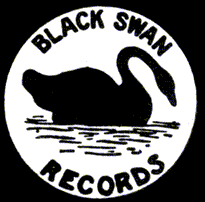
Black Swan Records was an American jazz and blues record label founded in 1921 in Harlem, New York. It was the first widely distributed label to be owned, operated, and marketed to African Americans. Founded by Harry Pace with W.C. Handy, Black Swan Records was established to give African Americans more creative liberties. Eighteen months earlier, in 1919, the Broome Special Phonograph Records was the earliest label owned and operated by African American George W. Broome in Medford, Massachusetts, featuring Black classical musicians including Harry T. Burleigh and Edward Boatner. Black Swan was revived in the 1990s for CD reissues of its historic jazz and blues recordings.

Berliner Gramophone – its discs identified with an etched-in "E. Berliner's Gramophone" as the logo – was the first disc record label in the world. Its records were played on Emile Berliner's invention, the Gramophone, which competed with the wax cylinder–playing phonographs that were more common in the 1890s and could record.

The American Record Company was an American record label that was in business from 1904 to 1906.
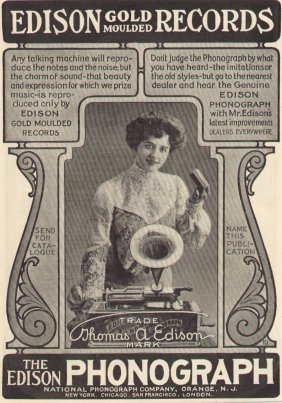
Edison Records was one of the early record labels that pioneered sound recording and reproduction, and was an important and successful company in the early recording industry.

George Washington Johnson was an American singer and pioneer sound recording artist. Johnson was the first African American recording star of the phonograph. His most popular songs were "The Whistling Coon" and "The Laughing Song".

Polk Miller was a musician and entertainer from Richmond and Bon Air, Virginia. He was also a pharmacist and the founder of Sergeant's Pet Care Products, Inc.
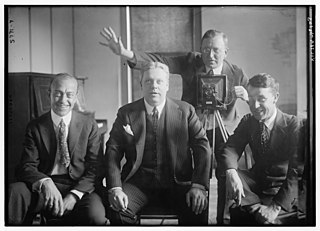
The Peerless Quartet was an American vocal group that recorded in the early years of the twentieth century. They formed to record for Columbia Records, where they were credited as the Columbia Quartet or Columbia Male Quartet. From about 1907, when they began to record for record labels other than Columbia, they were more widely known as the Peerless Quartet.

George J. Gaskin was one of the most popular singers in the United States during the 1890s and an early American recording artist.
The Dinwiddie Colored Quartet, also known as the Dinwiddie Quartet or Dinwiddie Quartette, were a black vocal quartet in the United States.

Stephen Carl Porter was an American pioneer recording artist, who recorded prolifically for numerous recording companies in the 1890s and early 1900s. He was also an entrepreneur who helped establish the recording industry in India in the early years of the twentieth century, and successfully marketed a new form of hearing aid.

Albert Charles Campbell was an American popular music singer who recorded between the late 1890s and the 1920s. He was best known for his many duo recordings with Henry Burr, and as a member of the Peerless Quartet and other vocal groups, but also recorded successfully as a solo singer both under his own name and under various pseudonyms including Frank Howard.
The Manhansett Quartet or Quartette, or Manhasset Quartet, was an American vocal group. It was the first such group to make commercial recordings in its own name, between about 1891 and 1901.

Harry Anthony was an American tenor and pioneer recording artist. With James F. Harrison he made several recordings of religious music that were popular at the time. He was known as a solo artist, and also became a member of the American Quartet. He made records for most of the major recording companies of the day.

Dan Kelly was an American pioneer recording artist, best known for his 'Pat Brady' series of humorous recitations. Kelly was born in New York City January 22, 1842. Both of his parents were musicians, and he began performing at 13 years old, at Wyatt's Theater in Hartford, Connecticut. He continued in minstrel shows such as Bryant's and Christy's, as well as traveling panorama demonstrations, before moving to Cincinnati to record for the Ohio Phonograph Company. Kelly recorded also for the Columbia Phonograph Company and New Jersey Phonograph Company. An article in The Phonogram magazine speaks to his popularity in the early 1890s - "Where is there a phonograph in the United States or Canada without a Brady? The answer is, no-where!", and "Kelly [...] stands to-day the acknowledged head of all humorous talkers for the phonograph". For all of his fame in the earliest days of the phonograph industry, he doesn't seem to have made any recordings later than 1893 or 1894, and it's unclear what he did later in life. Because he only recorded onto 'brown wax' cylinders, few of his recordings survive today.

Issler's Orchestra was an early recording ensemble, and perhaps the first popular band. The group formed in the fall of 1889 at the Edison Laboratory Because the purpose of the group was only to make recordings, it had only four or five performers, a form that would come to be known as a "parlor orchestra". Personnel and instrumentation varied in the first year, but most sessions included Edward Issler on piano, George Schweinfest on flute and D.B. Dana on cornet. Clarinetist William Tuson and xylophonist Charles P. Lowe would also become core members in time.

Charles Adam Asbury was an American banjo player and pioneer recording artist active from 1876 to 1897. On the stage, he played parts that emphasized his multiracial ancestry, and his recording work was largely in the minstrel tradition. His surviving recordings are the earliest examples of the stroke style of banjo.
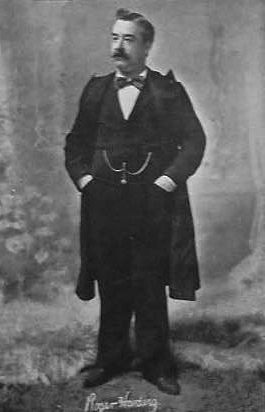
Roger Harding was an American singer, composer and music publisher active in the United States from 1890 to 1901.
References
- ↑ Brooks, Tim (2005). Lost Sounds: Blacks and the Birth of the Recording Industry 1891-1922. University of Illinois Press. pp. 75–82. ISBN 978-0-252-07307-6.
- ↑ Gracyk, Tim. "Early Recordings of African Americans/Early Ragtime".
- ↑ Brooks, p. 76
- ↑ Brooks, p. 88